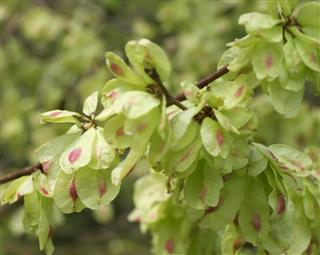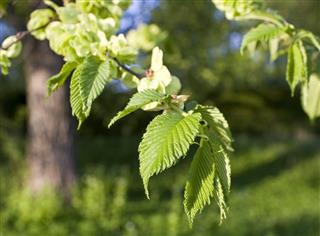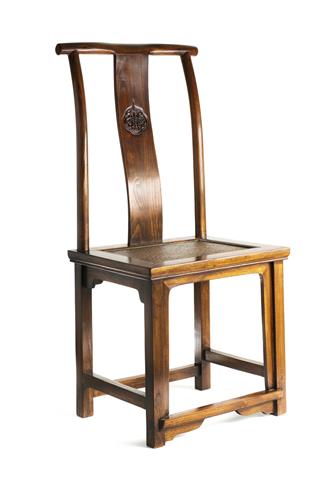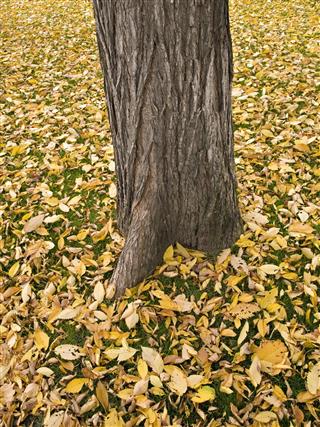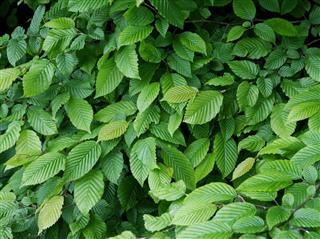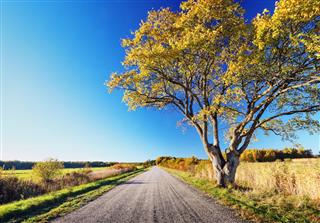
The elm is a graceful tree, perfect for planting in a wide range of soil types, and different growing conditions. This article delves on elm tree identification by using its different parts, like leaves, bark, wood, flowers, and fruits.
Elms are some of the most popularly planted ornamental trees in North America and Europe. Classified under the family Ulmaceae of the order Rosales, there is only one genus of this taxonomic family. And many species are identified under the single genus, Ulmus. Adaptable in varied soil types and environmental conditions, these deciduous or semi deciduous trees are included amongst the most valuable trees identified till date.
Identification
As per evolution studies, the elm tree evolved as early as 40 million years ago, in the Miocene period. A healthy one has the ability to survive for hundred of years, provided that it is not affected by diseases. Tolerant to air pollution effects, shade, and extreme low temperature, this ornamental tree is excellent for planting in roadsides, parks, and other traffic dense areas. Its propagation takes place by means of viable seeds and vegetative suckers. In most cases, it’s a propagated vegetation, as the seeds rarely become ripe.
By Leaf
Regarding elm tree leaf identification, it has a symmetrical base and doubly serrate margin (double-toothed) in the tips. The leaf shape is oval that tapers gradually towards the tip. Upon close examination, you will find that the leaves are rough, simple, and borne in alternate phyllotaxy. The leaves of slippery elm are larger in size (about 7 inches long) than that of American variety. Leaves of both species are harvested for feeding livestock.
By Bark
The bark of elm tree is distinctive in many ways. For a young tree, the bark is somewhat smooth, while older trees have a rough texture. In fact, slippery elm tree identification is done easily by examining its smooth inner bark. Externally, the bark of this deciduous tree is grayish brown with irregular ridges and furrows, which turns ash gray in mature trees. In some species, the furrows and ridges are very narrow.
By Wood
Elm wood is highly appreciated for its high density, about 560 kg per cubic meter. The American variety yields a denser wood, as compared to that of slippery one. Texture wise, the interlocking grains give a characteristic pattern to the wood. Highly resistant to splits and decay, this wood is used in major carpentry works, like flooring and furniture.
Elm Tree Identification by Flower
Another plant part studied for identification of elm tree is its apetalous (absence of petals) and anemophilous (pollinated by wind) flowers. Though there are no petals, the blooms borne in tuffs are conspicuous because of their colorful stamens (red or purple). Each of the flower is hermaphrodite, meaning both male and female reproductive organs are present in the same bloom.
By Fruit
Some elm trees bear fruits, while others are fruitless species. In botanical terms, the fruit type is called samara. The fruit is a pale green achene, characterized by the presence of a round seed in the center and flattened wing on the side. This feature allows easy dispersal of the seeds, by wind, to farther distances. The fruits are highly nutritious, containing approximately 45 percent proteins and more than 5 percent fiber.
Nearly all parts of this deciduous tree are usable. In fact, slippery tree bark benefits are documented in herbal medicine, and the fruits are also edible. By now, you might have a fair idea that this is a very handy plant that grows well in variable growing conditions. Hence, if you do not have this majestic tree in your yard, consider including it in your landscape design. Except for a few species that require well-drained soil, most of the varieties grow luxuriantly in any type of soil.
